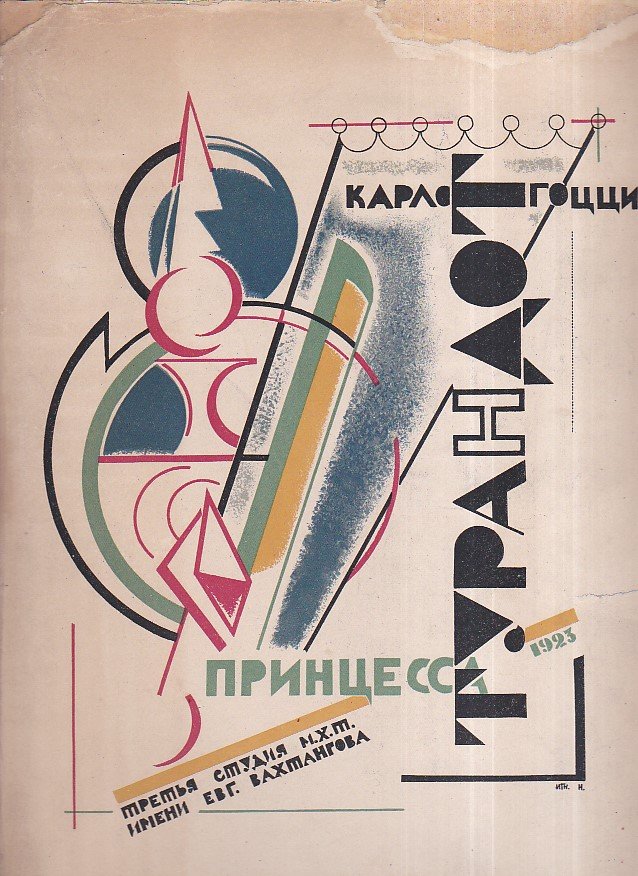Detalles
Lugar de impresión
Moskva - Petrograd
Autor
Gozzi Carlo (Testo) - Vakhtangov Eugenij Bagrationovich (Regia T, Eatrale)
Materia
Avanguardie russe, Teatro, Cubofuturismo
Impresión bajo demanda
No
Descripción
In-4° (332x250mm), pp. 222, brossura editoriale con composizione a colori di stile futurista del grande pittore, illustratore e scenografo russo di origine polacca Ignatij Ignatievic Nivinskij (Mosca, 1881-ivi, 1923). 2 ritratti fotografici a p. pag. di Vakhtangov, 22 tavv. in b.n. e 12 a colori f.t. dello stesso Nivinskij riproducenti le scenografie teatrali di stampo cubofuturista per la rappresentazione moscovita della 'Turandot' di Gozzi; le tavv. sono tutte protette da veline, alcune delle quali figurate. Numerose illustrazioni in b.n. n.t. Le 20 pp. finali sono di notazione musicale. Piccoli restauri marginali alla brossura, qualche ingiallitura lieve. Ottimo esemplare. Prima edizione di questo importante volume delle avanguardie russe degli anni '20, traduzione in russo della 'Turandot' gozziana (la delicata fiaba orientale ispiratrice del capolavoro di Puccini). Il grande regista teatrale Vakhtangov era da poco scomparso, e il presente libro volle commemorare il suo stupefacente allestimento dell'opera al Teatro delle Arti di Mosca. 'In 1923 a commemorative volume was devoted to Vakhtangov's colourful production of Carlo Gozzi's Princess Turandot for the Third Studio of the Moscow Arts Theatre. Unfortunately he died of illness without seeing this production, which he directed from his hospital bed. Costumes and decor were by Ignaty Nivinsky who was also responsible for the book, providing a cubistic design for the cover, printed in pastel shades of yellow, blue, pink and green. The publication, which includes colour plates as well as photographs, gives an idea of the look of the production, but cannot convey its calculated spontaneity. The theatre seated only three hundred people, providing an intimate space which Vakhtangov exploited. He first introduced the members of the cast to the audience by letting them take a bow in front of the curtain, wearing formal evening dress. As the curtain rose the actors proceeded to prepare for the spectacle by transforming first their clothes and then the stage with pieces of coloured material, moving rhythmically in time to music until they had created an illusion of China. The director thus encouraged the audience to share the preparations for the fairy story, and he prevented them from losing themselves entirely in the spectacle by having the actors get in and out of character several times during the performance. Princess Turandot proved so attractive to audiences that it ran to over a thousand performances and was successfully revived in the 1970s, when it played for several years' (Susan Compton, Russian Avant-Garde Books, p. 106 & plate 11). Compton, cit. Hellyer, 134. Rowell & Wye, 493. Russian Modernism, 222.


Descubre cómo utilizar
Descubre cómo utilizar

